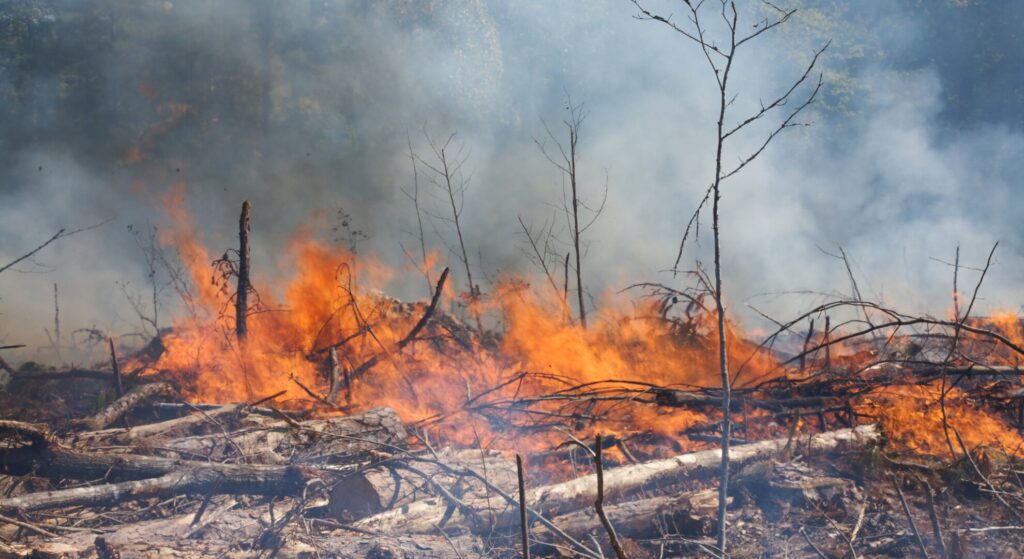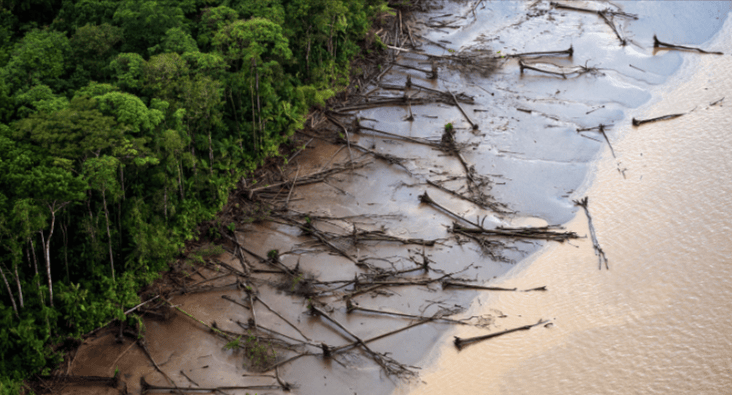Table of Content
Deforestation Impact: Environmental Consequences
Deforestation is the large-scale removal of trees from forests, which has a huge impact on our environment, climate, and everyday life. This blog will explore the various ways deforestation affects the world and what can be done to address this critical issue.
What is Deforestation?

Deforestation means cutting down trees from forested areas for purposes like farming, building cities, or logging. Each year, around 15.3 billion trees are lost, which changes landscapes and disrupts ecosystems all around the globe.
Why Are Forests Important?
Forests cover about 31% of Earth’s land area and are incredibly important for several reasons:
- Carbon Sequestration: Trees absorb carbon dioxide (CO2) from the atmosphere. This helps fight climate change because forests act as “carbon sinks,” storing large amounts of carbon and reducing CO2 levels in the air.
- Biodiversity: Forests are home to more than 80% of all land-based species. They provide essential habitats for a wide variety of plants, animals, and insects, helping maintain a balanced ecosystem.
- Water Cycle: Trees are crucial to the water cycle. They take in water from the soil and release it into the atmosphere, which helps regulate rainfall and maintain weather patterns.
- Soil Protection: Forests help prevent soil erosion by keeping the soil in place with their roots. This helps maintain soil quality and supports farming by keeping the land fertile and productive.
How Deforestation Affects the Environment
1. Accelerated Climate Change
When trees are cut down or burned, the carbon stored in them is released back into the air. This increases the amount of greenhouse gases in the atmosphere, contributing to climate change. Deforestation accounts for about 12% of global carbon emissions, which speeds up global warming and leads to extreme weather events like heatwaves and heavy rains.
2. Loss of Animals and Plants
Deforestation destroys the natural habitats of many species. When forests are cleared, plants and animals lose their homes, which can lead to extinction. For example, species like the orangutan and the giant panda are critically endangered due to habitat loss. The decline in biodiversity weakens ecosystems, making it harder for them to adapt to changes and recover from disturbances.
3. Water Problems
Forests help manage the water cycle by absorbing water from the ground and releasing it into the air. Without trees, there is less rainfall and more frequent droughts. The loss of trees also reduces the land’s ability to hold water, leading to increased flooding. This not only affects wildlife but also impacts agriculture and water supplies for people.
4. Soil Erosion
Trees help protect soil from being washed away by wind and rain. Without this protection, soil becomes more vulnerable to erosion, which leads to the loss of fertile topsoil. This soil is crucial for growing crops, so its loss can make farming more difficult and lead to food shortages, especially in areas that rely heavily on agriculture.
5. Increased Natural Disasters
Deforestation can make natural disasters worse. For example, when trees are removed, the soil becomes less stable and more prone to landslides and floods. Additionally, deforestation can make climate change impacts like storms and droughts more severe, affecting communities that rely on forests for their livelihoods.
6. Decline in Air Quality
Forests play a vital role in cleaning the air by absorbing pollutants and producing oxygen. When forests are cut down, air quality decreases because the burning of trees releases harmful substances into the atmosphere. Poor air quality can lead to health problems such as respiratory issues and heart disease, especially for people living near deforested areas.
7. Impact on Indigenous Communities
Many indigenous people depend on forests for their way of life, including food, medicine, and shelter. Deforestation threatens their resources and can lead to conflicts over land rights. When forests are destroyed, indigenous communities often lose their homes and face challenges to their cultural practices and traditional lifestyles.
How Deforestation Affects Local Economies and Global Markets
Local Economies
Deforestation has significant effects on local economies:
- Agriculture: While clearing forests can initially provide more land for farming, it often leads to soil degradation and reduced crop yields over time. This can hurt local farmers and lead to food insecurity. For example, in regions like the Amazon, deforestation for agriculture has led to soil that can no longer support crops, forcing farmers to clear more land.
- Tourism: Many regions rely on forest ecosystems for tourism. Forests attract visitors who come to enjoy natural beauty and wildlife. When forests are destroyed, it reduces the appeal of these destinations, impacting local businesses and economies that depend on eco-tourism. For example, national parks and wildlife reserves can lose their charm and visitor numbers, affecting local jobs and income.
Global Markets
Global trade plays a major role in driving deforestation:
- Timber: The global demand for wood products leads to large-scale logging and deforestation. To combat this, forest certification programs like the Forest Stewardship Council (FSC) ensure that wood is sourced from sustainably managed forests. These programs help promote responsible forestry practices and reduce the negative impacts of logging.
- Soy: Soy is often grown in cleared forests, particularly in South America, for animal feed. This practice drives deforestation and has been linked to the loss of large areas of the Amazon rainforest. Promoting sustainable soy production and supporting companies that use certified soy can help reduce deforestation.
- Palm Oil: The expansion of palm oil plantations is a significant cause of deforestation in tropical regions. Palm oil is used in many products, from food to cosmetics. Supporting sustainable palm oil production and choosing products with certified sustainable palm oil can help protect these forests.
Solutions and Innovations
Agroforestry
Agroforestry involves growing trees alongside crops. This approach improves soil health, reduces erosion, and supports biodiversity. By integrating trees into farming systems, agroforestry creates more sustainable agricultural practices. For instance, trees can provide shade, which helps crops thrive, and their roots can stabilize the soil, reducing erosion.
Forest Certification Programs
Forest certification programs like the Forest Stewardship Council (FSC) promote responsible forestry practices. These programs ensure that timber and paper products come from well-managed forests that are not being over-harvested or damaged. Certification helps consumers make informed choices and encourages companies to adopt sustainable practices.
Technology
New technology is helping to monitor and combat deforestation:
- Satellite Monitoring: Satellites provide valuable data on forest cover and changes over time. They help track deforestation activities and enforce conservation policies by giving a clear picture of forest loss from space.
- Drones: Drones offer detailed aerial views of forests, which can be used to monitor deforestation, detect illegal logging, and support conservation efforts. They provide high-resolution images that help authorities take action against deforestation.
What Can We Do to Help?
Here’s how we can all make a difference:
- Support Sustainable Practices: Choose products from companies that use sustainable practices in farming and logging. Look for certifications like FSC for wood products and sustainable palm oil.
- Get Involved in Reforestation: Participate in or support tree-planting programs. Many organizations work to restore deforested areas, and getting involved can help bring back lost forests.
- Conserve Forests: Support efforts to protect existing forests and their wildlife. This can involve advocating for conservation policies and supporting organizations that work to preserve natural habitats.
- Raise Awareness: Educate others about the importance of forests and the impact of deforestation. Sharing information can help spread awareness and encourage more people to take action.
Conclusion
Deforestation has serious consequences for our planet. It speeds up climate change, destroys animal habitats, disrupts water cycles, and causes soil erosion. It also affects local economies and global markets. However, by understanding these impacts and supporting sustainable practices, reforestation efforts, and conservation initiatives, we can work together to protect our forests and create a healthier future for everyone.
By taking action and raising awareness, we can all contribute to solving the problem of deforestation and ensuring that forests continue to provide their vital benefits for generations to come.
FAQs on deforestation impact
- How does deforestation contribute to climate change?
Deforestation contributes to climate change in two main ways: First, cutting down trees releases the carbon stored in their biomass into the atmosphere, increasing greenhouse gases. Second, fewer trees mean less CO2 is absorbed from the atmosphere, which accelerates global warming.
- How does deforestation affect the carbon cycle?
Deforestation disrupts the carbon cycle by releasing stored carbon from trees into the atmosphere, increasing CO2 levels and enhancing the greenhouse effect. It also reduces the number of trees available to absorb CO2, further aggravating climate change.
- What are the broader environmental impacts of deforestation on climate?
Beyond increasing greenhouse gases, deforestation can alter local weather patterns, reduce rainfall, and contribute to more extreme weather events such as droughts and storms. This further exacerbates the effects of climate change.
- What actions can be taken to reduce deforestation’s impact on climate change?
Efforts to reduce deforestation’s impact include promoting reforestation and afforestation, supporting sustainable forestry practices, and enforcing laws to protect forests. Additionally, using technology to monitor forest cover can aid in enforcing conservation efforts and help mitigate climate change.

Leave a Reply